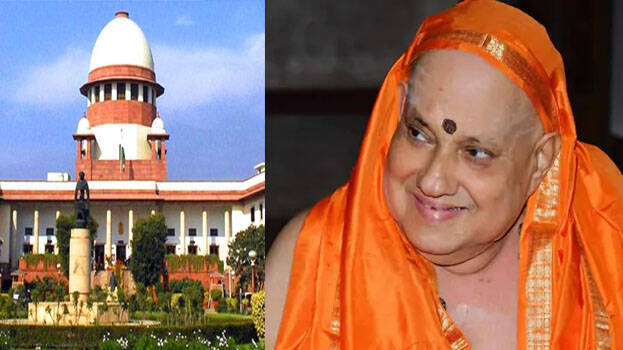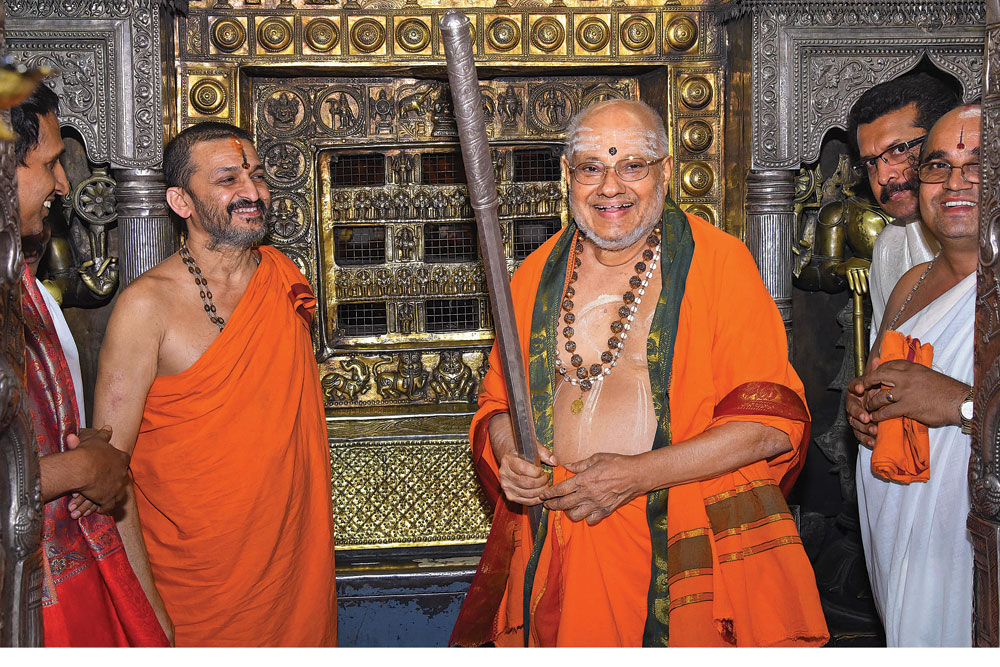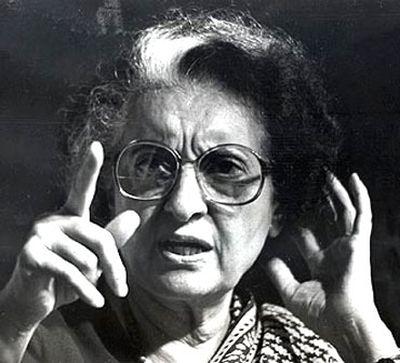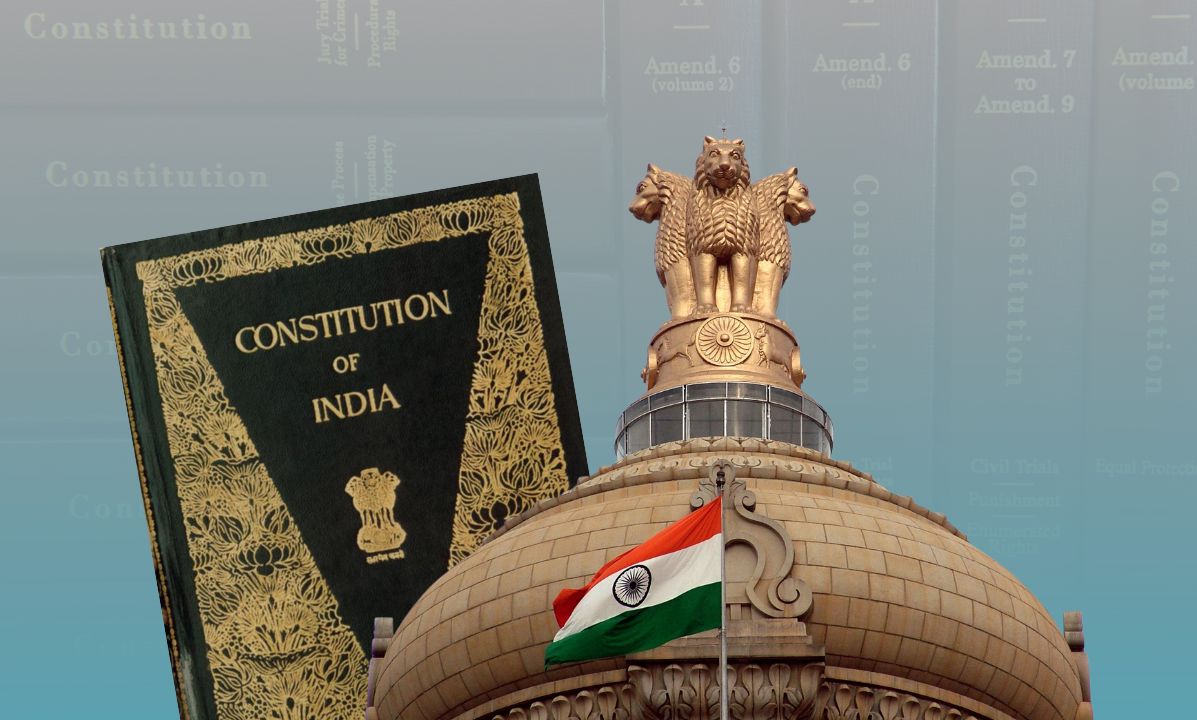
Constitution…the set of laws that guide the path on which our country is governed. Although the government in power does have all the rights to make amendments to it, it has NO right to make changes in what is called the ‘Basic Structure’ of the Constitution. This crucial and historical clause is possible only because of one Supreme Court judgement. The Kesavanada Bharati v State of Kerala case, often considered the most important case in the history of the Indian judiciary. Many of us often hear about the case, but today, we will understand the history, meaning and significance of the judgement.
The ground for the case
The whole story started with one decision of the Kerala government. In the year 1963, CM R Sankar-led Congress government brought the ‘Kerala Land Reforms Act 1963’. This was aimed at “regulating” the amount of land a person can hold for bringing forth an ‘equitable distribution’. Under this, the state government acquired around 300 acres of land of the Edneer Mutt in the state’s Kasaragod district. Following this, the mutt’s seer Shri Kesavanada Bharati challenged the decision in the Supreme Court alleging “disruptions” in the running of the mutt.
In legal terms, Bharti had filed a writ petition in SC challenging the Act, citing that the property is the “main source” of his income. He alleged that the acquiring “violates” the ‘fundamental rights’ such as Articles 14 (equality before law), 19 (right to hold, acquire and dispose property), 25 (freedom to profess, practice and propagate any religion), 26 (establish and maintain institutions for religious or charitable purpose), which infer upon him the right to purchase land as per his choice.
Also, at the same time several other important cases like — Banks nationalisation case 1970 (petition challenging nationalisation of all banks), the Madhavraj Scindia Case 1971 (petition challenging the abolition of privy purses) and the Golakhnath v State of Punjab case 1967 (wherein the SC had ruled that parliament can’t change the basic rules of the Constitution) — were being brought in front of the apex court. So, in what we term the Kesavananda Bharati case, along with the Kerala Land Reform Act, these three amendments were also challenged.

Seer Kesavanada Bharati from Edneer Mutt in Kerala (Photo: Open Magazine)
Golaknath Case and Subsequent Amendments
As I said above, in the Golaknath v State of Punjab case, SC had imposed certain restrictions on Parliament in amending Constitution. Now, to reinforce its curtailed powers, the Indira Gandhi government then brought — the 24th, 25th and 29th — amendments. The core point of all these cases was that Parliament believed that it has “unlimited” powers to amend the Constitution.
The 24th Amendment stated, “Parliament has the power to amend any provision of the Constitution”. The 25th Amendment wading upon the land issue said, “The Right to Property can be curtailed and government can acquire land for public use, and the compensation can only be decided by the Parliament not the court”. The 29th Amendment was just the last nail in the coffin, as it put the Land Amendment Act under the 9th Schedule.
Here, it is pertinent to note that, laws put under the 9th schedule CANNOT be challenged or questioned by court. So, this gave Land Amendment Act impunity against any forthcoming court order.
The Case Hearings and Arguments
The petitioner side argued that Article 368 of the Constitution gives Parliament the power to make amendments to Constitution, but it is not an ‘absolute’ right and is ‘limited’ in nature. They further alleged that the 24th and 25th Amendments “curtail” the rights of the citizens, violating constitutional rights such as Article 19 (1) (f), which says about the Right to Property.
On the other hand, the respondent side (government) argued that Parliament has “absolute and unlimited” powers to amend the Constitution. It argued that a state has the responsibility of ‘bettering’ its social and economic conditions, so in case restrictions are imposed on its powers, it won’t be able to discharge its responsibilities properly. It added that it can put “reasonable restrictions” on fundamental rights such as Freedom of Speech and Expression, Right to form Associations, and Freedom of Religion.

The landmark judgement recently completed 50 years (Photo: Civilsdaily)
The ‘Epic’ Judgement
April 24, 1973. In its historic judgement, the apex court stated that the Parliament does have the power to amend any provision of the Constitution. But and a big BUT, it also added that “Parliament cannot interfere with the basic structure of the Constitution”. This is also called the ‘Basic Structure Doctrine’. The order added that, which exact issues will be considered under the basic structure, will be decided by the Court.
The case was the longest in Indian history, spanning 68 days over six months. And, interestingly so, the mammoth judgement of 703 pages, too was the closest in history with the narrowest of margins; 7-6. Actually, the verdict was 6-6 at one time, and it was Justice Hans Raj Khanna who made the ‘tie-breaker’ vote in favour of the ‘Basic Structure Doctrine’. So, it was just one judge, just a simple wafer-thin majority, that SAVED the Constitution from getting into any adverse form.
Although the court held all three 24th, 25th and 29th amendment as valid, it made clear that even if some provisions have been put under the 9th schedule of the Constitution, that “violate” the basic structure, it can be held under ‘Judicial Review’. It was a very significant statement as it stopped the impunity that any government would have used to put “unconstitutional” provisions in the Constitution.
Now, the question that must be pondering in people’s minds is what happened to the land of Kesavanand Bharati; the matter on which the whole story started. Well, he lost the case and the land was acquired by the government. The court somehow, was of the opinion, that removing the fundamental right to property is within the rights of the government and doesn’t alter the ‘Basic Structure Doctrine’.

The decision did not go down well with former Prime Minister Indira Gandhi (Photo: Rediffmail)
The Indira Gandhi episode
Now, irrespective of how landmark the judgement was, leaders with “dictatorial” tendencies tend to be averse to the judiciary, that too if it is enforcing democratic principles. That’s exactly what happened under then-Prime Minister Indira Gandhi. As the dialogue in Sacred Games goes “Balidan dena hoga” (Sacrifice is a must), the judges behind this landmark verdict too had to bear the brunt. Mrs Gandhi’s “insecurity” about this verdict was so high that she superseded the three SC judges — JM Shelat, AN Grover and KS Hegde — who were in line to become the next Chief Justices. And, on expected lines, AN Ray who was one of the six dissenting judges was made the CJI. Not just that, even during the Emergency period (1975-77), she did try to somehow get away with this ‘Kesavananda Bharti case’. (next section)

Nanabhai Phalkiwala…the lawyer who saved the Constitution (Photo: Be An Inspirer)
The Crucial Role of Nanabhai Phalkiwala
In this historic case, the case of Kesavananda Bharti was represented by Nanabhai Phalkiwala. And as destiny had it, Phalkiwala and Mr Bharti NEVER even saw each other. Upon knowing about the Kesavanda Bharati case, Phalkiwala decided to take the case, as he saw an opportunity to save the ‘fundamental rights’ of the citizens and challenge the recent amendments. Eventually, he was able to prove that Constitution is not a “dead” document, but has a soul, which is known as the ‘Basic Structure’. Even this very term, ‘basic structure’ was first used by Phalikwala only. Further, when Indira Gandhi during the Emergency tried to get away with the judgement, and a 13-judge bench was constituted for it, it was Phalkiwala who stood like a rock. His strong arguments built pressure on the judges and many of them (except the CJI of course) recused and the plan failed. Justice HR Khanna who gave the ‘tie-breaker’ vote, talking about Phalkiwala said, “If a list of greatest judges in the world, Pahlkiwala would definitely feature in it”.
Significance of the Judgement
There are several points in the judgment that make it so important, so much so, that it is even taught to students in law schools. Firstly, since, the Golaknath case was heard by 11 judge-bench, it meant that the case challenging it needed a larger bench, and hence came India’s largest ever 13-judge bench, including the then CJI Sarv Mittra Sikri. Thirdly, for reaching the judgement, the constitution of more than 70 countries was compared and later this judgment served as inspiration for many countries. Fourthly, the order is considered a landmark in nature because it defined the ‘extent’ to which the Parliament can amend Constitution. Fifthly, and most importantly, the apex court used its ‘creativity’ here while introducing the ‘Basic Structure Doctrine’.
“With changing time, whenever there will be a need to add new rights, the constitution can be amended,” that’s what the Constitution states about amendments. But, up to what level can th government in power go. After all, Adolf Hitler too was an ‘elected’ leader who amended Grundgesetz (German Constitution), so much so, that he changed the country’s structure to dictatorial. For not encountering such a situation in future, the Kesavanda Bharti judgement defined an extent to which the government can make amendments.
Basic Structure roughly comprises points like; Supremacy of the Constitution; the sovereign, democratic and republic nature of the Constitution; the Secular character of the Constitution; Separation of powers between the executive, legislature and judiciary; the federal character of the Constitution; and unity and integrity of the nation.

The Indian Constitution (Photo: Youth Incorporated Magazine)
A Judgement that Saved Democracy
So, that’s how the longest case, with the largest bench, laid the foundation on which our Constitution and Democracy are still alive. So ironically, the seer who actually filed the case on whose name we remember the case, Kesavanda Bharati, never met the lawyer, and eventually, himself lost the case. It was as if destiny had already played its part in setting up the foundation. More importantly, the judgement survived even the worst of attempts to modify it including the Emergency period.
The case also showed how “dictatorial” tendencies were prevalent during that phase as well. Three potential Chief Justices and many others had to bear the brunt. But, despite all trying and tweaking, the very fundamentals of our Constitution survived. They make sure that despite which ideology comes to power, the Indian Constitution doesn’t forget the principles it is based upon. And I hope, irrespective of how strong any “evil and dictatorial” forces may come to power (or have), the ‘Basic Structure’, the Constitution and the Democracy, in my country keep on thriving for a lifetime.

